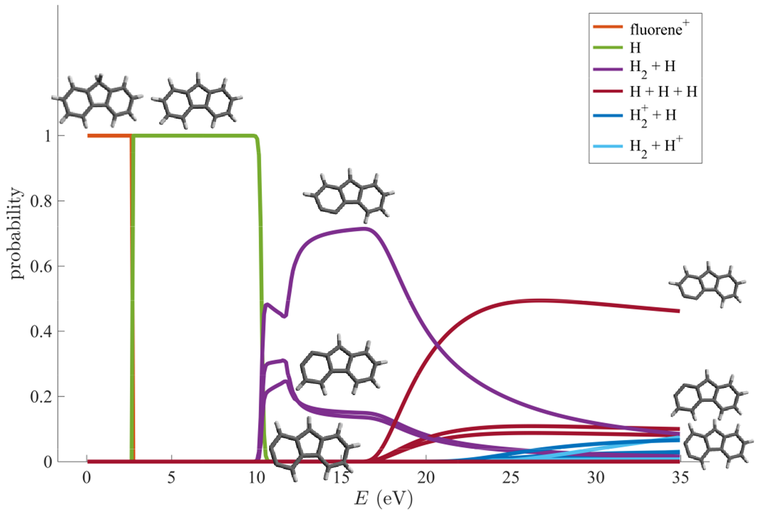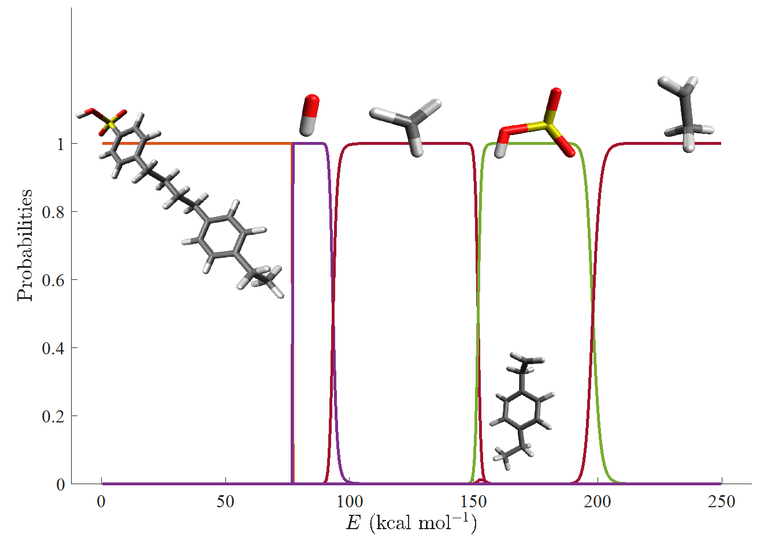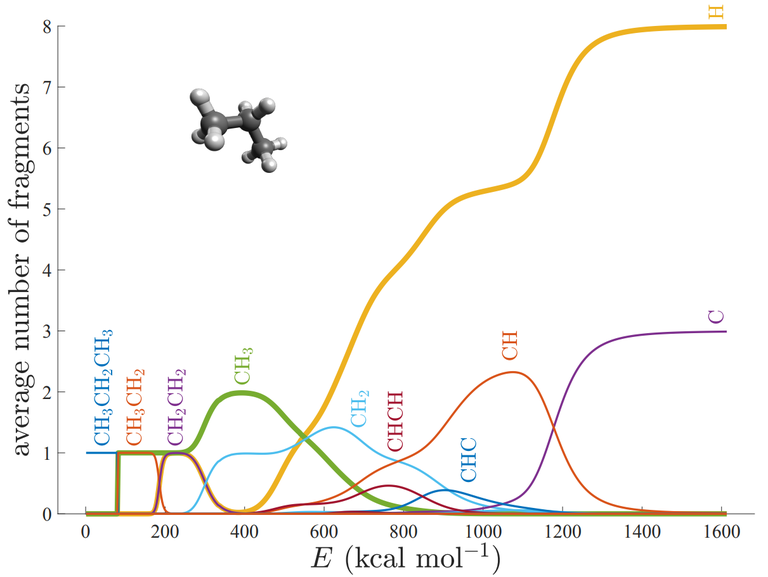Statistical methods - Molecular fragmentation
contact: Pierre Desesquelles
Molecular fragmentation is a process of great interest in fundamental chemistry, astrophysics, plasma characterization, and applied research into the destruction of polluting molecules.
Predicting the probabilities of fragmentation channels makes it possible to optimizedepollution processes by minimizing the energy invested and avoiding the generation of new pollutants. To understand the chemistry that occurs in the interstellar medium, we need to study the competition between molecular growth mechanisms and fragmentation caused by collisions and electromagnetic radiations.
The fragmentation of molecules can be produced and studied experimentally using plasmas, but also laser pulses, synchrotron radiation, and ion or electron beams. These experimental works need to be complemented by theoretical studies to optimise the experimental set-ups and working conditions beforehand, and to interpret the results later.
We have developed the SMF (Statistical Molecular Fragmentation) model [1], which calculates, in a fast way, the probabilities of all possible fragmentation channels of a parent molecule as a function of the deposited excitation energy. The model was shown to be capable of reproducing experimental fragmentation results for various molecules, including the small hydrocarbons observed by the LPGP DIREBIO team [2].
SMF can be considered a generic model of statistical fragmentation, as it uses only well-established theoretical schemes and molecular descriptions. It is purely algebraic, which makes it fast enough to handle the thousands of fragmentation channels, up to atomization, of molecules containing a few dozen atoms. For the largest molecules, it is possible to calculate all the low-energy channels, i.e., those corresponding to the breaking of a few bonds [3,4].
Unlike highly simplified algebraic models (RRKM, Eyring …), SMF results remain reliable even far from the fragmentation threshold and can therefore be used to calculate competing channels. What's more, unlike Molecular Dynamics-type methods, which involve calculating potential energy surfaces and then simulating a large number of trajectories, SMF eliminates the need to evaluate the dynamic evolution of the system, which means that it is not limited to the study of a few channels at a few energies, but can produce a complete characterization of the fragmentation of a given molecule.

Loss of atomic and molecular hydrogens, both neutral and charged, by a fluorene cation [5].

Fragments emitted at low excitation energy by a resin monomer [4].

Species produced by the fragmentation of propane up to complete atomization [1].
[1] Pierre Désesquelles,Nguyen-Thi Van-Oanh, Sébastien Thomas and Dominik Domin, Phys.Chem.Chem.Phys., 2020, 22, 3160
[2] Pierre Désesquelles, Stéphane Pasquiers, Nicole Blin-Simiand, Lionel Magne, Nguyen-Thi Van-Oanh, Sébastien Thomas and Dominik Domin, Phys.Chem.Chem.Phys., 2020, 22, 7586
[3] Lejin Xu,Wuyang Li, Pierre Désesquelles, Nguyen-Thi Van-Oanh, SébastienThomas, and Jun Yang, J. Phys. Chem. A 2019, 123, 933−942
[4] Xiang Meng, Pierre Désesquelles, Lejin Xu, journal of environmental sciences 135 (2024) 433–448
[5] Pierre Désesquelles, Nguyen-Thi Van-Oanh, Lejin Xu, Yining Luo, Tam V.-T. Mai, Lam K. Huynh and Dominik Domin, Phys. Chem. Chem. Phys., 2021, 23, 9900
